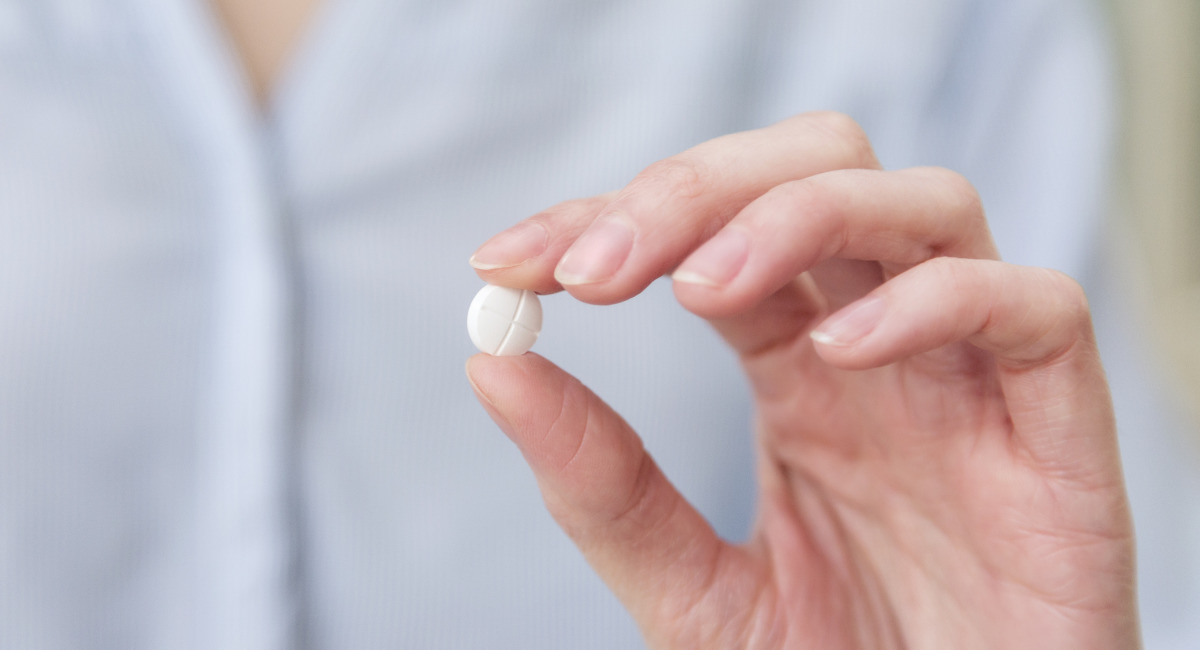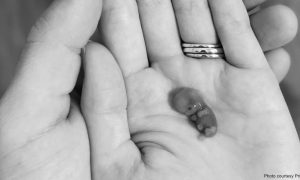Editor’s Note: This article is the fifth installment in a series. Other articles can be read here: Bad Actors #1, Bad Actors #2, Bad Actors #3, Bad Actors #4, Bad Actors #6, Bad Actors #7.
The abortion industry has, for a very long time, stuck to a certain script about how the abortion pill is administered: a woman takes the first drug, mifepristone, by mouth on day one. Then 24-48 hours later, she takes the second drug, misoprostol, placing it inside the cheek pouch of her mouth. This is the FDA-approved process.
But now, the abortion industry is skirting these rules by encouraging vaginal insertion of misoprostol… something that was halted years ago when some women contracted a rare infection after using the drug vaginally — and died.
The dosing regimen of mifepristone and misoprostol in the abortion pill regimen is below:
- On day one: 200 mg of mifepristone taken by mouth.
- 24 to 48 hours after taking mifepristone: 800 mcg of misoprostol taken buccally (in the cheek pouch), at a location appropriate for the patient.
- About seven to 14 days after taking mifepristone: follow-up with the health care provider.
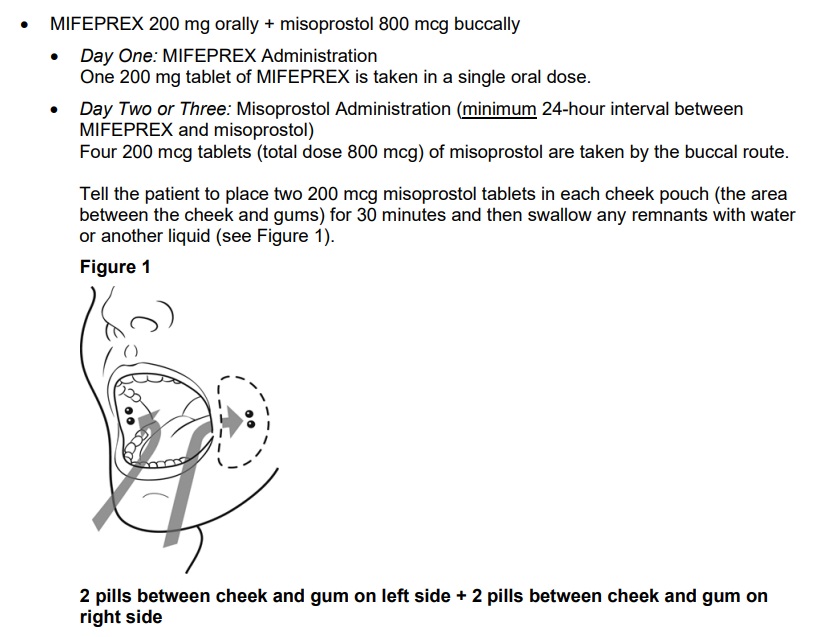
Mifepristone Jan 2023 label taking the abortion pill
Yet, those in the abortion industry, including Planned Parenthood, regularly allow for vaginal insertion of the second drug in the regimen (misoprostol). See examples of this here, here, and here.
In addition, some in the industry are touting a ‘same-day‘ abortion pill protocol (including Planned Parenthood facilities) for women traveling from out of state. This protocol also differs from the FDA-approved REMS safety requirements and may be less effective and more risky for women who use it.
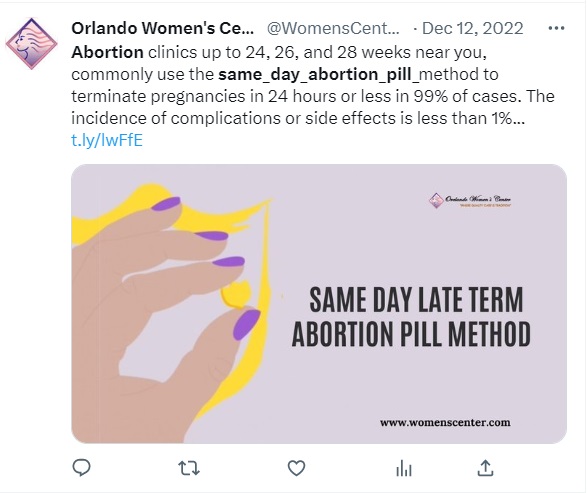
Offering same day abortion pill late in pregnancy (Image: Twitter)
The abortion pill was approved in 2000, and almost immediately thereafter the abortion industry began using it off-label. As a result, multiple women died after contracting a rare infection called C. sordellii.
Notably, vaginal use of the misoprostol has been suggested as a potential ‘causal factor’ in those events, since, according to one report, “4 women in the United States who developed this condition after medical abortion had used misoprostol vaginally.” Shortly after these deaths, several abortion providers, including Planned Parenthood, discontinued recommending vaginal insertion of misoprostol.
Until recently.
Planned Parenthood’s website now states, “First, you’ll take a pill called mifepristone. Pregnancy needs a hormone called progesterone to grow normally. Mifepristone blocks your body’s own progesterone, stopping the pregnancy from growing… Then you’ll take the second medicine, misoprostol, either right away [emphasis added] or up to 48 hours later.”
Clients who want to administer misoprostol immediately are told by Planned Parenthood to insert the drug vaginally, “0-48 hours after taking mifepristone.”
A July of 2022 report from KWIT in Iowa confirmed the existence of this protocol, noting that a Sioux City Planned Parenthood was administering the drug vaginally because it “doesn’t require patients to wait 24 hours for a second dose of the medication.”
But a separate report from the Washington Post regarding a policy change by the National Abortion Federation (NAF) pointed out that “[w]hile both abortion pills — mifepristone and misoprostol — can be taken at the same time if the misoprostol is taken vaginally, this method is far less popular and would make immediate travel risky, providers say, because the patient could begin passing the pregnancy on their way home.”
According to a chart published by the pro-abortion American College of Obstetricians and Gynecologists (ACOG) on “medication abortion,” the efficacy rate appears to be diminished when women take misoprostol vaginally at the same time as mifepristone.
In simpler terms, taking the second drug vaginally appears to increase the risk of an incomplete or failed abortion.
ACOG’s chart (below) shows that when taking misoprostol buccally (in the cheek of the mouth) 24-48 hours after mifepristone, the completion rate is 98.1% (at or less than seven weeks) and drops to 92.7% at 64 to 70 days (or nine to 10 weeks) of pregnancy. Misoprostol taken vaginally at 24-72 hours after mifepristone shows an efficacy rate of 98.3% (at or less than seven weeks) and drops to 94.9% at 64 to 70 days (or nine to 10 weeks) of pregnancy.
But when misoprostol is taken vaginally at the same time as mifepristone (0-.25 hours), the failure rate rises and efficacy drops to around 95 or 96% (at or less than seven weeks) — increasing the failure risk — and decreases even further when using this protocol between eight to nine weeks, ranging from to 91.6 to 95.3% at 63 days (or nine weeks) of pregnancy. The chart did not indicate what the failure rate would even be at 10 or more weeks, writing “N/A.”
This is problematic, as most Planned Parenthood and other abortion facilities are selling abortion pills well past the FDA-approved 10-week cutoff. The abortion pill has been a boon for the industry. As of 2020, the abortion pill made up more than half (53%) of all abortions committed in the United States.
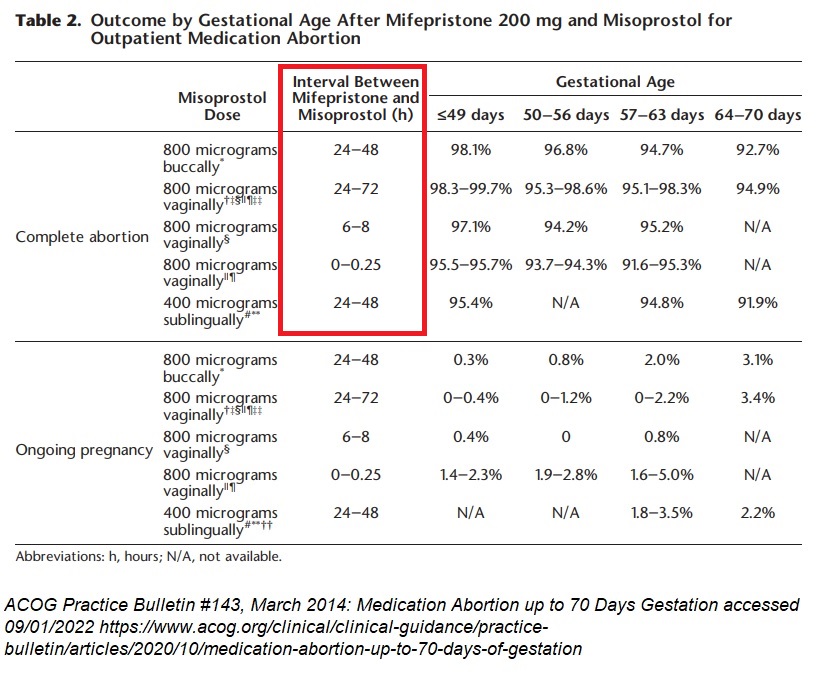
ACOG medication abortion interval between Mifepristone and Misoprostol accessed 09012022
In addition, Planned Parenthood of Illinois’ instruction and aftercare document on medication abortion clearly warns, “If you take mifepristone Day 71-77, you cannot use misoprostol vaginally.”
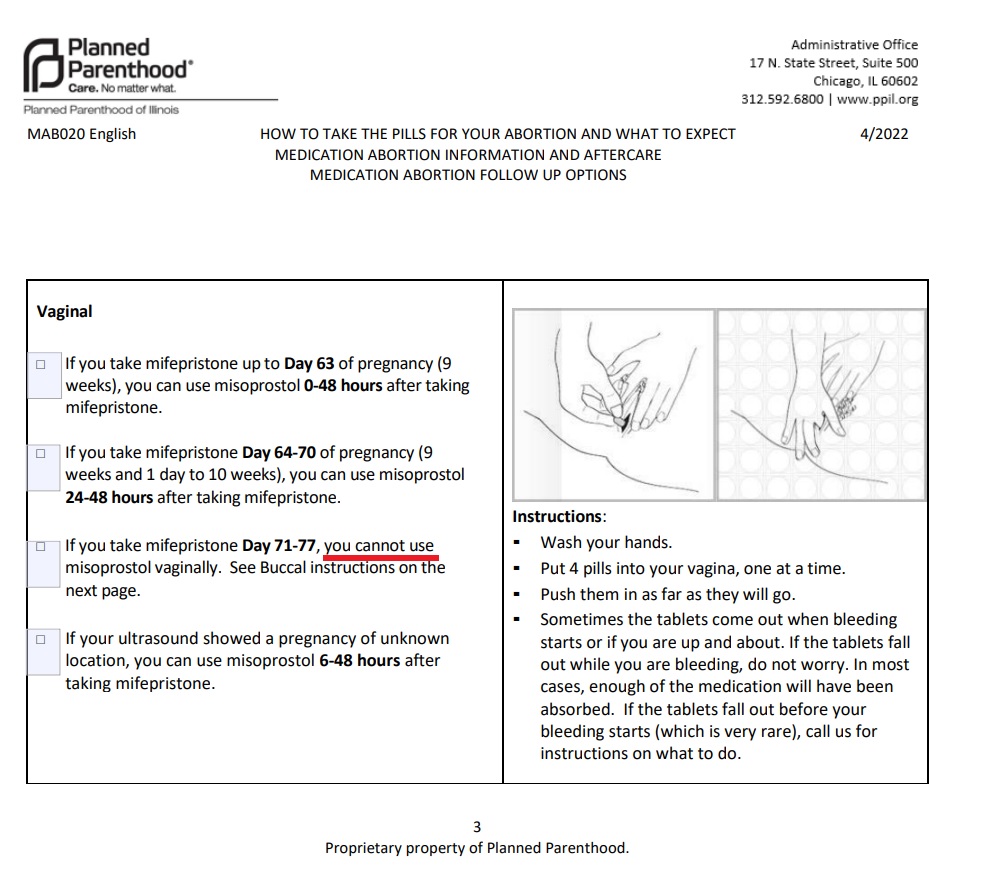
Planned Parenthood April 2022 doc on abortion pill
Whether or not vaginal use of misoprostol led to the deaths previously mentioned, the FDA protocol calls for misoprostol to be used buccally, in the checks of the mouth, not vaginally. This is yet one more way the abortion industry does not strictly comply with the FDA safety requirements and continues to flout the REMS without any sanctions whatsoever.

